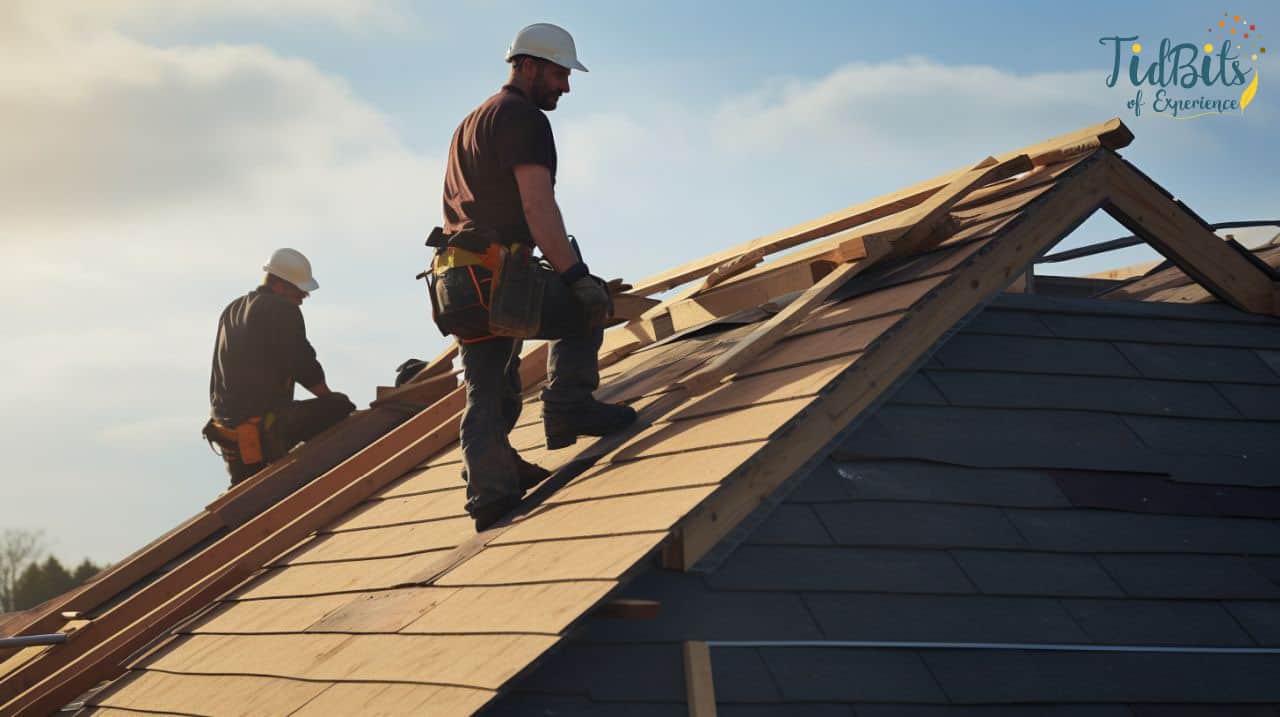When it comes to roofing, choosing between flat roofs and sloped roofs is akin to selecting the perfect pair of shoes for your outfit—each option has its unique style and functionality. Are you leaning toward the modern, minimalist appeal of flat roofs, or are you captivated by the timeless charm of sloped roofs? The decision isn’t as straightforward as it may seem. In this article, we’ll dive into the world of roofing, exploring the pros, cons, and best practices associated with flat and sloped roofs, helping you make an informed choice for your home or business.
Understanding Sloped Roofs: Timeless Beauty and Durability
In contrast to the sleek lines of flat roofs, sloped roofs offer an enduring and timeless aesthetic appeal that captivates homeowners and architects alike. These roofs come in various styles, including the elegant gable, the classic hip, and the charming mansard, allowing homeowners to tailor their choice to complement their architectural preferences perfectly. But sloped roofs are not merely about aesthetics; they are pragmatic marvels. With its gentle incline, its inherent design is a natural ally against water woes. Sloped roofs are particularly adept at channeling rainwater and snow away from your property, minimizing the risk of leaks and structural damage, especially in regions prone to heavy rainfall or snowfall. Furthermore, the longevity of sloped roofs is a significant selling point. These roofs often outlast their flat counterparts, providing decades of reliable protection. The enduring appeal and durability of sloped roofs make them a wise investment for homeowners who value both aesthetics and long-term performance.
Understanding Flat Roofs: Versatility and Efficiency
Flat roofs are architectural wonders known for their versatility and efficiency. These roofs have surged in popularity for several compelling reasons. First and foremost, their cost-effectiveness makes them a go-to choice for budget-conscious individuals and businesses alike. The affordability of flat roofs can significantly reduce initial construction expenses, making them an appealing option for those seeking to maximize value. But their appeal extends far beyond financial considerations. Flat roofs unlock a world of possibilities for additional space utilization. Imagine turning your rooftop into a lush garden oasis, a cozy patio retreat, or a hub for solar panels harnessing renewable energy. This adaptability not only enhances your property’s functionality but also resonates strongly with eco-conscious individuals and communities. Speaking of sustainability, the energy efficiency of flat roofs deserves special mention. With proper insulation, flat roofs excel at conserving energy, helping you maintain comfortable indoor temperatures year-round while minimizing heating and cooling costs.
Pros and Cons Comparison
To help you make a more informed decision, let’s summarize the key differences between flat and sloped roofs:
Sloped Roofs: Selecting the appropriate roofing material for sloped roofs is equally pivotal, as it profoundly affects the aesthetics, performance, and durability of your roof. The most common material for sloped roofs is asphalt shingles, known for their affordability and availability in various colors and styles. They are an excellent choice for homeowners seeking a balance between cost and aesthetics. If durability is your prime concern, metal roofing deserves a closer look. Metal roofs, often made from steel, aluminum, or copper, are renowned for their longevity and resistance to extreme weather conditions. They can withstand everything from heavy snow loads to scorching summer heat. Additionally, metal roofs are environmentally friendly and highly recyclable, making them a sustainable choice. To make sure your metal roof fulfills all of the promises, make sure to work with a reputable metal roofing company.
Flat Roofs: When choosing the suitable material for flat roofs, you’re presented with various options. For instance, built-up roofing (BUR) consists of layers of bitumen and reinforcing fabrics that create a robust, waterproof barrier. It’s known for its longevity and resistance to UV rays. Alternatively, consider lightweight single-ply membranes, which come in various types, including EPDM, TPO, and PVC. These membranes offer flexibility and ease of installation, making them an attractive choice. Moreover, for those with a strong commitment to sustainability, there’s the intriguing possibility of green roof systems.
Factors to Consider When Choosing Roof Type
Now that we’ve explored the pros and cons of flat and sloped roofs, we must delve into the factors that should influence your decision-making process. Your choice should be tailored to your specific circumstances, so consider the following:
Climate and Weather Conditions: Consider the weather patterns in your region. Flat roofs may not be suitable in areas with heavy rainfall or snowfall, whereas sloped roofs excel in these conditions.
Budget and Cost Considerations: Determine your budget for roofing. While flat roofs are generally more budget-friendly upfront, sloped roofs may offer better long-term value due to their durability.
Aesthetic Preferences and Architectural Style: Consider your personal style and the architectural aesthetics of your property. Sloped roofs often complement traditional and classic designs, while flat roofs align better with modern, minimalist architecture.
Long-Term Maintenance and Repair Costs: Assess your willingness to invest in maintenance and potential repairs. Flat roofs require regular attention, while sloped roofs are generally lower maintenance.
Environmental Impact and Sustainability: If environmental concerns are a priority, investigate sustainable roofing options and their impact on your carbon footprint.
Conclusion
So, as you stand at the crossroads of choosing between flat and sloped roofs, remember there’s no one-size-fits-all answer. The decision should align with your specific needs, preferences, and budget. Are you drawn to the simplicity and cost-effectiveness of flat roofs, or do you find solace in the classic elegance of sloped roofs? It’s a choice that should reflect your unique circumstances.
In closing, we leave you with a question: Which roof type resonates with you, and how will it enhance your home or building? Your answer holds the key to a roof that protects and complements your lifestyle.
